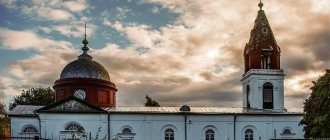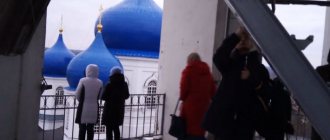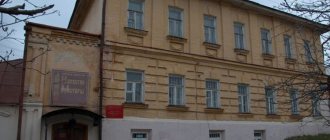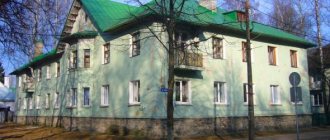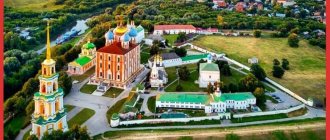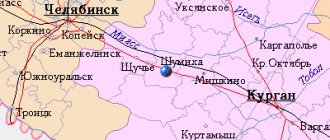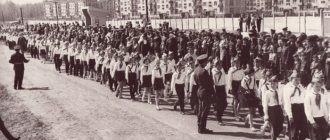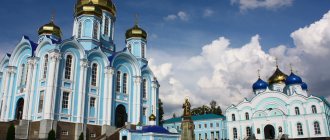For other uses, see Gus-Khrustalny.
City in Vladimir region, Russia
| Gus-Khrustalny Gus-Khrustalny | |
| City [1] | |
| Saffle bus in Gus-Khrustalny | |
| Flag Coat of arms | |
| Location Gus-Khrustalny | |
| Gus-Khrustalny Location Gus-Khrustalny Show map of Russia Gus-Khrustalny Gus-Khrustalny (Vladimir region) Show map of Vladimir region | |
| Coordinates: 55°37'N 40°41'E / 55.617°N W. 40.683°E / 55.617; 40.683 Coordinates: 55°37'N 40°41'E. / 55.617 ° N W. 40.683°E / 55.617; 40,683 | |
| A country | Russia |
| Federal subject | Vladimir region [2] |
| Based | 1756 [3] |
| City status from | 1931 |
| Government | |
| • Head | Nikolay Balakhin |
| Height | 130 m (430 ft) |
| population size (2010 Census) [4] | |
| • General | 60 784 |
| • Evaluate (2018) [5] | 54 533 ( -10,3% ) |
| • Classify | 267th place in 2010 |
| Administrative status | |
| • Subordinate | City of Gus-Khrustalny [2] |
| • Capital from | Gus-Khrustalny district [6], Gus-Khrustalny city [2] |
| Municipal status | |
| • Urban district | Gus-Khrustalny urban district [7] |
| • Capital from | Gus-Khrustalny urban district [7], Gus-Khrustalny municipal district [8] |
| Timezone | UTC+3 (MSK[9]) |
| Postal code [10] | 601500, 601501, 601503, 601505–601508 |
| Dialing code(s) | +7 49241 |
| OKTMO ID | 17720000001 |
| Web site | gusadmin.ru |
Gus-Khrustalny
(Russian: Gus-Khrustalny) is a city in Vladimir Oblast, Russia, located on the Gus River (a tributary of the Oka) 63 km (39 mi) south of Vladimir, the administrative center of the region. Population: 60,784 (2010 census); [4] 67,121 (2002 census); [11] 76,360 (1989 census); [12]65,000 (1970); 40,000 (1939); 17900 (1926).
Administrative and municipal status[edit]
As part of the administrative divisions, Gus-Khrustalny serves as the administrative center of the Gus-Khrustalny District, [6] although it is not part of it. [1] As an administrative division, that is, together with an urban-type settlement of Gusevskiye and one rural area (Panfilovo settlement), which is included as a city of Gusevskiye
-an administrative unit with status equal to the districts.
[2] As a municipal entity, Gus-Khrustalny is part of the Gus-Khrustalny urban district
. [7]
Gus-Khrustalny
Video: Gus-Khrustalny
Basic moments
For a long time the city was called Gus-Maltsevsky, but with the advent of Soviet power, the merchants' surname was removed from the name and replaced with Khrustalny. However, this sounds even more poetic. In the 20th century, it was difficult to find an apartment in Russia where there was not a piece of colored glass made at the famous Gusev Crystal Factory on the sideboard shelf. These artifacts have survived to this day. You can see a huge collection of crystal and get acquainted with the far from simple production of both standard and unique products in the Crystal Museum, which occupies the premises of St. George's Cathedral, and at the factory itself.
Streets in Gus-KhrustalnyThe attention of tourists will be attracted by the old part of Gus-Khrustalny, which has preserved buildings from the mid-19th – early 20th centuries, made of red brick with white window trim. The authorities do not allow modern construction in this area so as not to lose the historical atmosphere of the city.
National Natural Park "Meshchera"
Lovers of outdoor recreation in Gus-Khrustalny will be pleased with two large park complexes. One of them is the Meshchera National Park, which occupies a huge territory of 119 thousand hectares and is, in fact, a nature reserve. The park is spread over three regions: Vladimir, Ryazan and Moscow. The other is the Skazka park, located nearby and more cultivated: it has wooden sculptures depicting heroes of Russian folk tales (mermaid, owl and others), beautiful benches, and comfortable paths. In the park area, mainly coniferous trees grow, which contributes to the cleanest air, saturated with phytoncides. There is a beautiful lake in the Skazka park, near which it will be pleasant to relax. However, swimming in it is prohibited.
In addition to the Crystal Museum, there is also a local history museum in Gus-Khrustalny, telling about the past and present of the city. A separate exhibition dedicated to the Great Patriotic War is presented.
Among the temple buildings, you can visit the Holy Trinity Cathedral, built in 1851. Unfortunately, the temple suffered greatly during the years of Soviet power. Currently, the cathedral has been restored.
The Gus River flows through the entire city, and in the center there is an artificial reservoir, near which both locals and tourists like to relax.
History of the city of Gus-Khrustalny
The history of the city of Gus-Khrustalny is closely connected with the history of the crystal factory, which is rightfully considered a city-forming enterprise.
It all started when in 1756, in the Shivorovo tract on the Gus River, entrepreneur Akim Maltsov began construction of a new glass factory. The location was chosen in the Vladimir region because glass production was banned in the Moscow region due to merciless deforestation. Soon production was launched, and workers transferred from Mozhaisk settled in the vicinity of the plant. Gradually, more and more factories were built that produced glass products, as well as cement.
View of the former factory with a lake, 1970s
The family business has been passed down from generation to generation. So, in 1831, Ivan Maltsov became the owner of the enterprise, who breathed new life into outdated manufactories. He lived in Europe for a long time and sought to introduce all the technical innovations of his time. On his initiative, a “sample chamber” was created, where copies of the best products produced at the plant were stored. Soon, colored glassware and artistic painting were mastered. The plant rightfully began to bear the name “Crystal”. Having been part of a delegation under Emperor Nicholas I in the Czech Republic, Maltsov became acquainted with the production of Bohemian glass, the principles of which he implemented in his factory. Engraving was also mastered here, glass samples were decorated with diamond (diamond) edges. In the middle of the 19th century, many samples of the Gusev Crystal Factory were awarded prestigious awards at domestic exhibitions.
In the 19th century, the factories were replenished with paper spinning, non-spinning and paper and weaving production. In the 80s of the 19th century, more than 4,000 people worked in all types of production, including 700 at the crystal factory.
In 1919, the village of Gus-Maltsevsky began to be considered a city, and in 1926 it was renamed Gus-Khrustalny.
St. George's Cathedral at the beginning of the 20th century
During the Great Patriotic War, glass production was subordinated to the needs of the front: glass flasks for thermoses, flasks, and thermometers were produced. A Defense Committee was created in Gus-Khrustalny, several hospitals operated, and a people's militia was formed.
During the Soviet era, standard houses were built in the city, the embankment of the Gus River was equipped, museums and the Meshchera national park were opened.
The history of the city of Gus-Khrustalny and the Gusevsky plant in the 21st century is dramatic. In 2011, the plant was closed because it could not pay off its debts for electricity, and the entire team of employees was fired. The criminal situation in the city was also difficult.
Only in 2013, one workshop of the plant producing colored crystal resumed its work. The city continues to live and develop. Now it is a regional center in the Vladimir region. The population of Gus-Khrustalny is about 52 thousand people, the area is 43 km².
Interesting fact
Muscovites live in Moscow, St. Petersburgers live in St. Petersburg, but what should we call the residents of Gus-Khrustalny? They are called Gusevchans: a man is a Gusevchanin, and a woman is a Gusevchanka. The residents themselves call themselves Gusevites.
Sights of Gus-Khrustalny
What might interest tourists in a small town that can be explored on foot in a couple of hours? At first glance it seems like nothing special. But there is something to see and where to relax. It’s impossible not to visit the Crystal Museum, because Gus-Khrustalny is famous for these products.
Crystal Museum
The Gusev Crystal Museum has existed for more than 35 years. It is designed to preserve the best examples of the craftsmanship of Gusev crystal makers and introduce visitors to the outstanding products of glassblowing masters. The merits of the plant's workers have always been highly valued. At the end of the 19th century, colorless crystal with a diamond cut was very popular. Price list catalogs were created at the plant, in which basic samples were entered, on the basis of which all new products were created. In the 20th century, advanced techniques were mastered: imitations of precious and semi-precious stones appeared - malachite, jasper, opal. Crystal dishes were decorated with gold and silver paintings.
The masterpieces of the factory's craftsmen have rightfully earned prestigious awards at International exhibitions in Austria, France, and America. Even the Faberge trading house purchased products from them. Masters supplied dishes to the imperial table. They were allowed to designate the Coat of Arms of Russia on their products.
St. George's Cathedral (now the Crystal Museum)
In post-Soviet times, the plant in Gus-Khrustalny was not going through the best period. After closing in 2012, it reopened only in 2014, having significantly reduced production, fulfilling only private handmade orders. Today the plant bears the name of its founder Akim Maltsov.
The Crystal Museum is located in a very beautiful building - the former St. George's Cathedral. It was built over 11 years under the direction of architect A. Benois and was opened in 1895. Both the building itself and its interiors are made in pseudo-Russian style. The walls were painted by artist Viktor Vasnetsov. Unfortunately, many works have not survived. Only two of them have been restored: the painting “The Last Judgment”, whose area is 50 m², and “The Blessed One,” made in the style of a mosaic made of colored glass. The hall is decorated with a luxurious antique crystal chandelier. After the October Revolution, various institutions were located in the cathedral building, and in 1983 the Crystal Museum was opened.
Under the arches of the ancient cathedral, between massive columns made of black stone, there is a museum exhibition, including about 2000 exhibits. Basically, these are elements of tableware: wine glasses, vases, dishes. There are also candlesticks and other interior items. The exhibition presents the history of production, displays art products of the 18th century, Maltsov crystal of the 19th century, three-layer glass vases and other objects that they learned to make in the 20th century. Here you can find imitation gold and silver, samples of “etching” on milk glass, and artistic enamel painting.
The altar, the most important part of the cathedral, is decorated with the “Hymn to Glass” collection, made by master glassblowers V. Muratov and V. Kasatkin.
You can spend quite a lot of time at the Crystal Museum, looking at every detail, marveling at the skill and talent of real artists. Classical music plays in the halls, creating an atmosphere of solemnity and sublimity.
Crystal MuseumDue to the excellent acoustics in the cathedral, music festivals are held here twice a year. You can find out the date and time on the museum website.
In addition to the permanent exhibition, the basement is equipped with a room for changing exhibitions.
If you want to buy a souvenir that will remind you of your visit to Gus-Khrustalny, then be sure to go to the crystal store. Here you will find a colored crystal apple, a bell, an egg, a transparent goose, and animal figurines - symbols of the year. Those who prefer crystal dishes or vases will be able to purchase beautiful sets for themselves and as gifts.
Meshchera National Park
If visiting the Crystal Museum takes you 1-1.5 hours, then we recommend spending the rest of the day in nature, in the Meshchera National Park.
The park, which opened in 1992, occupies a huge area - about 300 km², including adjacent territories. It is located on the lands of three regions: Vladimir, Ryazan and Moscow. The purpose of creating the national park was to preserve the unique nature of the Meshchera region. There are many bodies of water in the park, with rivers flowing through it: Oka, Tasa, Buzha, Kraslitsa, Gus and others. Here, cool lakes delight with their beauty, including Svyatoe, Glukhoye, Klepikovskoye, Dubovoe, Velikoye. At its core, Meshchera Park is a nature reserve. Birds and animals, fish and insects live here, and unique plants listed in the Red Book grow.
Meshchera National ParkRecreation areas, parking lots, and campsites are equipped here especially for tourists. Under the guidance of experienced instructors, you can go hiking or cycling. The park has created eco-trails, along which you can see with your own eyes rare animals, such as muskrats and beavers.
35 km from the town of Gus-Khrustalny, in the village of Tasinsky, an open-air museum is equipped. A reconstruction of a Russian village of the 19th century was created here - wooden houses, baths, wells. Folklore festivals are held on the territory in compliance with all existing rituals.
Adjacent to Meshchera Park is the Fairy Tale Park, where “on unknown paths there are traces of unseen animals,” namely, wooden sculptures of characters from folk and literary fairy tales.
Cafes and restaurants
In Gus-Khrustalny you can have a pretty decent and inexpensive lunch. Their services will be provided by such establishments as the Maltsov restaurant, located in shopping arcades with 19th-century interiors; popular restaurants “Dzhem” and “Umka”; Vanilla coffee shop, offering coffee and tea with pastries and sweets; cozy cafe Modern.
Practical information
Gus-Khrustalny gladly welcomes tourists at any time of the year, but it will be more convenient to visit the city in the summer months, since in winter it is buried in snow. It’s nice to walk through the old part of the city, to feel the passage of time, looking at the houses built at the end of the 19th – beginning of the 20th centuries for the workers of the Crystal Factory. All of them are made of red brick, and the windows are framed in white. In the center of Gus-Khrustalny, shopping arcades with numerous shops have also been preserved.
If you are not planning to go on an excursion to the Meshchera National Park, then 4-5 hours will be enough for you to explore the city and visit the Crystal Museum.
Where to stay
For those who decide to stay in Gus-Khrustalny, hotels and recreation centers are open. Of these, the Meshcherskaya Estate Park Hotel is distinguished by its comfort. These are the most expensive rooms. The Ondine and Krai hotels also look good, where you can rent a room for a reasonable price.
Booking.com
How to get there
There are several ways to get to Gus-Khrustalny. Those traveling by car from Moscow should note that the total distance will be about 250 km. You need to move along the Volga highway, Gorkovskoye highway, and then turn onto the P77 road, which will lead to your final goal.
By bus you can first get to Vladimir, and then transfer to the local route “Vladimir - Gus-Khrustalny”.
By train, you first need to get to Vladimir, matching the schedule of electric trains, which go to Gus-Khrustalny only twice a day.
On average, the road from Moscow to Gus-Khrustalny takes 4-5 hours. But the time spent is definitely worth it! In the small town of the Vladimir region, you will have a great time, see many crystal masterpieces, enjoy the nature of the Meshchera region and bring back unique souvenirs from here!
Links[edit]
Notes[edit]
- ^ ab Resolution No. 433
- ^ abcd Law No. 130-OZ
- ^ ab Encyclopedia of Russian Cities
. Moscow: Great Russian Encyclopedia. 2003. p. 114. ISBN 5-7107-7399-9. - ^ a b Federal State Statistics Service (2011). “All-Russian Population Census 2010. Volume 1" [All-Russian Population Census 2010, vol. 1]. All-Russian Population Census 2010 [All-Russian Population Census 2010]
. Federal State Statistics Service. - "26. The size of the permanent population of the Russian Federation by municipalities as of January 1, 2022". Federal State Statistics Service. Retrieved January 23, 2022.
- ^ ab State Committee of the Russian Federation on Statistics. Committee of the Russian Federation for Standardization, Metrology and Certification. No. OK 019-95 January 1, 1997 “All-Russian classifier of objects of administrative-territorial division. Code 17 220", ed. changes No. 278 / 2015 dated January 1, 2016. (Goskomstat of the Russian Federation. Committee of the Russian Federation for Standardization, Metrology and Certification. No. OK 019-95 January 1, 1997. Russian classification of administrative divisions) (OKATO).
Code 17 220 as amended by Amendment No. 278/2015 dated 01/01/2016). - ^ abc Law No. 145-OZ
- Law No. 69-OZ
- "On the Calculation of Time". Official Internet portal of legal information
. June 3, 2011. Retrieved January 19, 2022. - Post office. Information and computing center of OASU RPO. ( Post office
).
Search for postal service objects ( postal Search for objects
) (in Russian) - ↑
Federal State Statistics Service of Russia (May 21, 2004).
“The population of Russia, the constituent entities of the Russian Federation as part of federal districts, urban settlements, settlements, settlements is 3 thousand or more people” [Population of Russia, its federal districts, federal districts, districts Urban settlements, rural settlements - administrative centers and rural settlements with a population of over 3,000] (XLS). All-Russian Population Census 2002
. - “All-Union Population Census of 1989. The actual population of the union and autonomous republics, autonomous regions and districts, territories, negative phenomena, urban settlements and villages of Gus-Khrustalny - History.” prorossiu.ru
(in Russian). Retrieved December 23, 2022.
